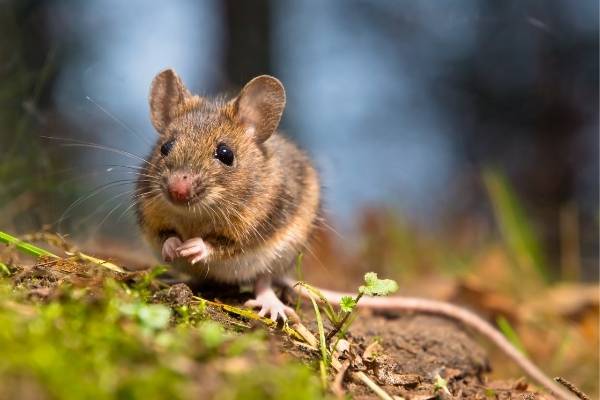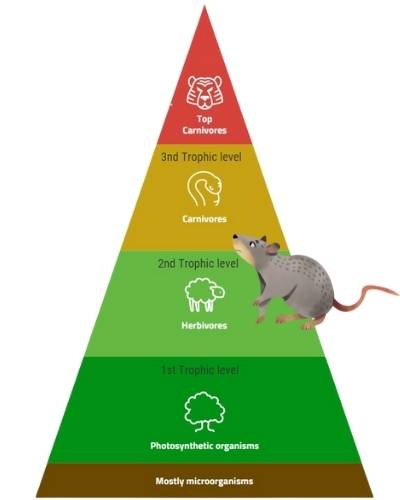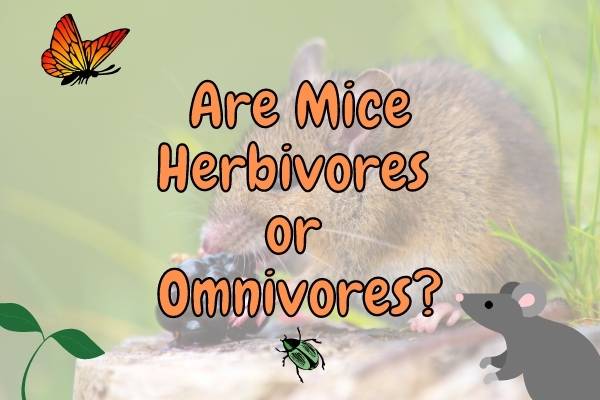Mice belong to the redent family and are one of the most versatile eaters in the animal kingdom. They are able to digest a wide variety of plant and animal matter including fruits and vergetable grains, insects and even meat, thus are known to be omnivores.
Yes, mice are indeed omnivores, eating almost anything edible in their way! This ability is indeed what makes mice such successful foragers and allows them live in so many different environments. In the wild, they can be found in a variety of habitats eating whatever food is available, which can be nuts, grasses, small insects and animals.
Interestingly, much of the dietary preferences of mice are already revealed in their mouth anatomy!
Mice typically have 18 teeth in their mouth–four incisors, two premolars and twelve molars but they lack canines. It is because of this tooth arrangement of their teeth that they are able to forage broadly.
The front tooth of mice is very precious to the mice as it is sharp and allows mice to perform burrowing and also helps in self defence.
While their diet may vary depending on where they live, one thing remains constant: mice love to eat!
So if you’re looking for a little friend who will always be down for a snack, a mouse might just be the perfect pet for you.
Habitat and Diet of Mice
Mice are found in a variety of habitats, including forests, grasslands, deserts, and even urban areas, especially in a domestic setting. They are omnivores, which means they will eat both plants and animals for their survival.
Some of the most common food items eaten by mice are:
The animal matter they feed on includes insects like beetles, caterpillars and cockroaches.
Feeding Habits of Mice
Mice have a very sharp sense of smell that they use to find food. Once they find food, they will use their sharp teeth to nibble on it until it is small enough to eat whole.

They are nocturnal and voraciously hungry ie. they can be mainly seen active during the night and are always looking for some food source.
Are Mice Carnivores, Herbivores or Omnivores?
On the basis of nutrition, animals are classified as Herbivores, Carnivore and Omnivores.
Herbivores are the animals that only feed on plant matter whereas carnivores are the ones that feed only on animal matter. Unlike herbivores and carnivores, omnivores are the animals that derive nutrition from both plant and animal matter.
Mice are omnivores because they eat a wide variety of foods. Mice eat plants, grains, insects, roots, bark, meat and even other small animals.
Is a Mouse a Producer, Consumer or Decomposer?
In nature, there are three categories of organisms based on whether they produce their own food or depend on other species for nutrition.
- Producers- Organisms that prepare their own food by obtaining energy in form light or chemicals. They are the major food source on the panet. Eg. Plants
- Consumers- Organisms that are dependent on producers for their food are called consumers. Eg. Animal species
- Decomposers- These are the species that feed on dead and decaying matter and do produce their own food. Eg. Mushrooms
Mice come in the category of consumers because they depend on other organisms for nutrition.
What Type of Consumer is a Mouse?
Mice are secondary consumers because they eat animals as well as plants but animals are not their primary food!
Generally, herbivores are primary consumers, omnivores secondary consumers and predators tertiary consumers.
Can Mice be Considered Decomposers?
Mice, a decomposer? Not really. They may occasionally eat dead animals or carrion, but they are not considered scavengers or decomposers. However, the bacteria in the guts of mice may be considered decomposers. Therefore, none of the mice species are decomposers but rather are omnivores.
Where in the Food Chain does Mice belong?
Mice are small mammals that play an important role in the food chain. They are a source of food for many predators, including snakes, birds of prey, and other small mammals. Mice are also important as they help to control the population of insects and other small animals.

Mice are omnivores and usually eat seeds, nuts, grains and insects. However, because mice are also scavengers they will occasionally eat dead animals, carrion, etc. Thus, mice are also considered secondary consumers.
Are Mice Autotrophs or Heterotrophs?
Mice are heterotrophs as they derive nutrition from other plant and animal species. Mainly, animals are not autotrophic because animals do not get their energy directly from the sun like plants do.
Animals depend on either plants or animals for their nutrition. Animals like mice cannot make their own food for energy, but are dependent on other organisms for their nutrition and so are heterotrophs.
What Animals Hunt and Eat Mice?
Mice are prey to a wide variety of animals found in the cities and in the wild. As a secondary consumer in the food chain, they are mainly a source of energy for the tertiary consumers.
Mice are also food for other animals including snakes, hawks, owls, foxes, cats, raccoons, coyotes, bobcats and even rats and other mice!
Have you ever seen mice in your homes and industrial settings near you? Aren’t they annoying?
Yes, in their voyage to search for food they tend to contaminate food, damage property, and spread diseases.
For these reasons, people often hunt mice to get rid of them just like they would do with groundhogs and gophers in their backyard.
Conclusion
In this blog post I have given you an overview of mice nutrition. Mice are omnivores, meaning they are dependent both plants and animals for their nutrition.
They are seen to active at nice and are always found searching for food. They are mainly seen to be positioned as secondary consumers in a food chain.
Mice are highly social animals and often live in groups,thus are commonly seen in houses and industrial location where food is an availability.
So next you see a mice, remember that it can eat the grass in your garden and can also help you in getting rid of tiny insects in your house as they are omnivores.




